Sage can be grown not only as a decorative culture, but also use it for practical purposes, for example, in cooking or in treatment. In this article, you will find information about landing sage and care for it, consider photos of the plants, learn how to harvest and apply culture with benefit for yourself.
Short description and species of sage
Sage refer to one of the most fragrant herbs, so that he found its use in cooking. This plant is a perennial and belongs to the family of Clanotkov. The distinctive characteristics of the culture are the bitter taste and saturated pathercable smell. In the flowering season, Sage launches rather attractive small inflorescences of bright blue, purple, blue, pink, red or white shades. The second name of the culture is "Salvia", which is translated from Latin as "healthy." The plant is known to many of their medicinal properties, thanks to which in medicine it stands in one row with chamomile and calendula.
Among the many varieties of sage can be highlighted thermal loving and cold-resistant species. The first are grown in the gardens only as annuals. Description of some popular varieties we will look at further.
To cold-resistant varieties of Salvia include such varieties:
- The most common type of culture is a sage medicinal, which was used in medical and culinary purposes even during the Roman Empire. A similar plant loves well-lit plots and qualitatively drained soil. The drug sage is propagated mainly by seeds that plant in the ground immediately after the end of the frost. The culture is unpretentious in care, and during the flowering period you can collect stems, which will subsequently be used in therapeutic or culinary purposes.
- Salvia Forest is another cold-resistant variety of sage, distinguished by beautiful blue and purple flowers. This species became the basis for the creation of interesting hybrids, the inflorescences of which are painted in pink and even in white shades.
- Salvia Dubravnaya - frost-resistant culture, characterized by unpretentious care. The flowers are painted mainly in purple or lilac shades.
- Sage meadow blooms in the first summer months, covered with white, pink or lilac shades with bundles.
- The sage stitching has high decorativeness and good tolerance of cold weather. The inflorescences are painted in a saturated-lilac, the bootonization period begins in July, and ends in the middle of autumn.
- Salvia Transylvanian was cultivated in Russia. It feels well in the shaded areas, from June to September blooms with gentle-lilac buds.
- Sage Blue is another of cold-resistant species. During the flowering period, small light blue petals release.
- Salvia Japanese, as clear from the name, comes from Japan. This is a later-flowing variety, which produces the first inflorescences in August, and completely flows to October. Such a culture grows well on wet soil and with ease tolerate a small shadow.
- From South America came to us the sage swamp, characterized by high stems and large carved leaves. The flowering period lasts from the middle of the summer until the middle of the autumn. The plant loves good illumination, the inflorescences are painted in light blue color.
Heat-loving sage varieties are grown in gardens as annuals. We describe the most popular thermal-loving types of Salvium:
- Sage sparkling is quite common in Russian gardens due to its high decorativeness. The flowering period of culture begins in the middle of the summer and ends in late autumn. As for the buds, they have a wide color palette and can be represented even orange and red shades. Sage sparkling well grows on moderately wet soil.
- Salvia Red Rod from South America, loves a hot climate and high humidity. Begins to bloom in the late summer, inflorescences painted in white, pink or red shades.
- The sage narcotic is distinguished by silver foliage and small purple flowers. This variety belongs to the Rannetic and the period of its bootonization falls on May-June. Such a variety of culture is applied in culinary purposes.
- Bright blue flowers decorated with a milder, which pleases the eyes from the summer to the beginning of autumn.
- Salvia Mytov came to us from the hot mexico. Its distinctive feature is a very pleasant aroma, resembling the smell of black currant. Moreover, this plant smells the foliage itself, if it is a little confused her in his hands. The sage of this variety blooms from summer to frosts with beautiful red inflorescences.
- Salvia Slender reaches a height of 1 meter and is considered to be a tall view compared to other varieties. Flowers on this plant appear in August and have a red shade. The foliage has a pleasant fruit fragrance, thanks to which this species is used in cooking.
- The homeland of Salvia discolored is Mexico, and the distinguishing feature of the culture is an unusual shade of colors and their shape. The petals of the buds are painted in a dark blue, almost black color, and the inflorescences themselves are half hidden in a cup.
- Sage Muscade refers to many years of cultures and in the warm climate is really like that, but in cold latitudes it is preferable to grow as an annual plant. Petals Salvia Muscate painted in gentle-lilac, light blue or pink. The period of bootonization falls on the spring and summer. This variety is distinguished by a saturated pleasant aroma, so the culture is processed on essential oil and used in the perfumery industry.
- Another thermal-loving Mexican variety is Salvia opened, blooming from July to October in rich blue buds. Well multiplied with seeds and in the warm climate is grown as a perennial.
- Salvia Mountain was cultivated for a long time, approximately in the 1980s in Texas. A distinctive feature of the variety are beautiful rich-red flowers and a wide lush bush. This type perfectly tolerates drought, the flowering period lasts from July to October.
Features of landing sage
Salvia can be multiplied by several ways: seed sowing, decens or cuttings. The most common method is the seed reproduction, while the bushes grown from the decene and cuttings are obtained weak and quickly die.
Seeds at seedlings are beginning to sow in the first days of April, closeing the grains into the ground to a depth of up to 1.5 cm. After planting the soil, the soil is constantly moisturized from the sprayer and follow, so that it does not drive. Capacity with sedation is kept in a warm outdoor place, where the ambient temperature is maintained at 20-25 ° C. In compliance with such conditions, the first sprouts begin to make their way to the third week.
After the appearance of germs, they are divened, waiting for the stalks in 2 real leaves. Young shoots hide from direct sunlight. Put plants at a permanent place at the end of May or early summer. Until this time, if there is such a need, the sprouts are transplanted several times in deeper containers with the Earth.
Sage is better to be placed on open solar sites located on a flat or slightly sublime area. It is desirable that there are no highways nearby.
When growing sage, it is important to take into account the composition of the soil and its moisture. Such a culture prefers moderately moistened and well-drained soil saturated with nutrients and possessing a neutral or slightly alkaline medium. Preparation for landing Salvia is to pay the soil, the removal of all weeds and the introduction of nitrogen fertilizers. It will be technly added to the addition of a small amount of overworked manure, compost and fine-grained sand.
The wells, in which the sage will be planted, must be carefully moistened and deposited in each of them for 1 tsp. Ammophos or superphosphate. The seedlings itself is better transferred to a permanent place of growth on the 40th day, when 3-5 real leaves appear on the stems. In the first 4 weeks, Salvia is regularly watered, the land around the bushes is loose, and weeds are definitely removed.
Care for sage
Sage is relatively undemanding in care and does not need regular feeding fertilizers. At the end of the season of flowering, the soil around plants can be mulched by a compost, and it takes enough to use enough. The compost must completely cover the rosette of the leaves for the winter, so that many young shoots have grown in her place.
In the first 2 weeks after the landing of Salvia, it needs to be hiding from direct sunlight, creating a half with some cargo. The young chalfer will also not damage regular irrigation, but it is necessary to spend it by spraying, not watering. Perennial grade of Salvia for the winter is preferably stolen, especially in the first year after landing.
Another important procedure is the trimming of the sage, since the bushes without regular updates are very quickly aging. Printing is carried out in autumn or in spring, but not only during flowering bushes. If you neglect the haircut, Salvia stems will be pulled out and drop foliage, because of which the culture will lose a decorative look.
As for diseases and pests, Sage is most susceptible to mildew. However, it is easy to get rid of it, spraying a bushes with 1% mortar of the Bordeaux liquid. Among other parasites and diseases of Salvia can be called:
- sage mosquito;
- sage gallium;
- weevil;
- sage tick;
- winter scoop.
The best way to prevent disease is the observance of the rules of crop rotation. In this case, this means that the same plant after its wilt cannot be planted on the same place earlier than in 5 years. Such a rule is easy to adhere to the owners of large areas along the area of \u200b\u200bthe plots, and in small areas it is possible to fight pests with the help of special drugs, which is presented in specialized stores.
Collection and storage of sage
Collect the leaves of the sage can be several times during its flowering. In the first year, after the landing, it is advisable to tear off the stems only the bottom leaves, in all subsequent years you can collect both the leaves and the upper parts of the shoots. After harvesting, it is laid out for drying, pre-removing the ragged and dried leaves, as well as too rough sections of the stems.
Dry Salvia in the open sky, in a shaded and well ventilated place. If the weather does not allow to dry the plants on the street, it can be done in the oven, heated to a temperature of 50-60 ° C. In the dried form, raw materials can be stored for no more than 2 years, placing it in glass containers and putting it in a cool and dry place.
Use of Salvia in medicine and cooking
The extract from the leaves of Sage has an anesthetic and diuretic effect on the body. Salvia is also known for its anti-inflammatory properties, therefore it is used to treat acne rashes and other skin lesions accompanied by redness and swelling.
In the leaves of Salvia, there are many useful components, among which the essential oils can be distinguished, tanning substances, vitamins B1, C, R. Medicines, which include sage, are used for rheumatism therapy and arthritis. Another beneficial property of the plant is its ability to expand the vessels and increase blood pressure.
The fragrant essential oil of Salvia helps with stress and neurosis. A relaxing effect also has tea from dried leaves and plants stalks. Such a decoction can be treated to redness of the throat with an ARZ and an angina.
Sage has hemostatic properties and is used in gynecology to slow down bleeding. The presence of natural phytoestrogen plants allows it to be used to facilitate the state of women experiencing a climacteric period. This grass is also used to stop lactation, stimulating sexual activity, enhancing male potency, the treatment of female infertility.
Sage found its use in such a region as cosmetology. The rinsing balsams with this component contribute to the acceleration of hair growth and strengthen them. The anti-inflammatory properties of Salvia make it possible to use culture for the treatment of skin redness.
The dried grass of the sage is used as a spice in fish, meat, poultry dishes. It is combined with rosemary, thyme, pepper, garlic. Fresh leaves can also be part of the dishes, especially when it comes to Mediterranean cuisine.
Sage, photo:

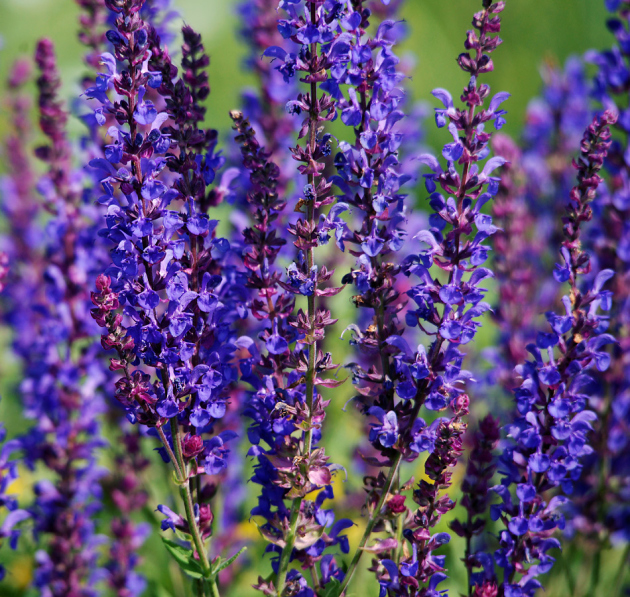
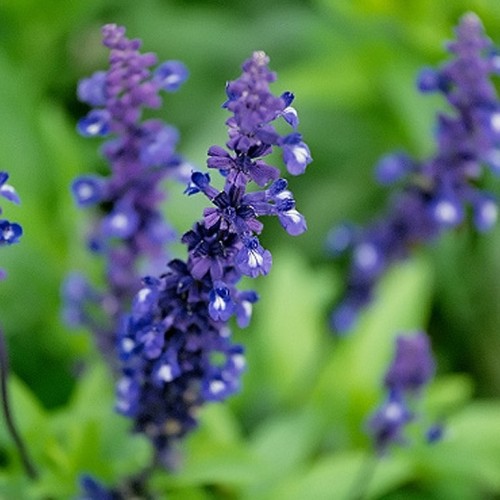
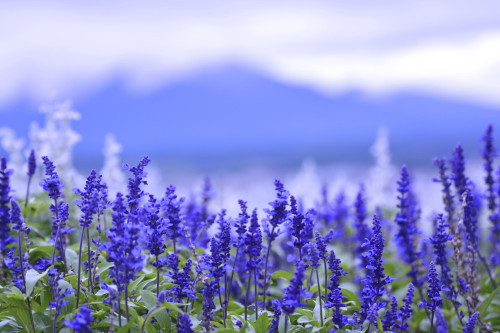
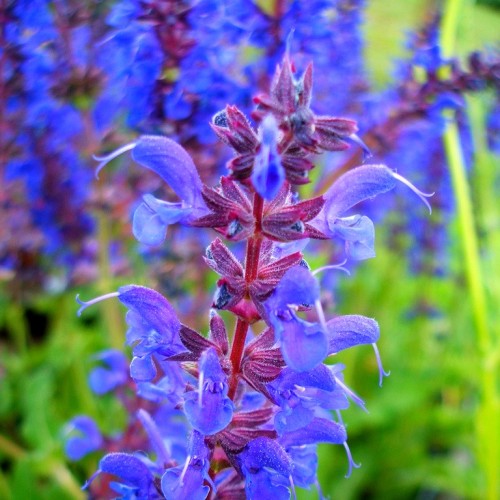
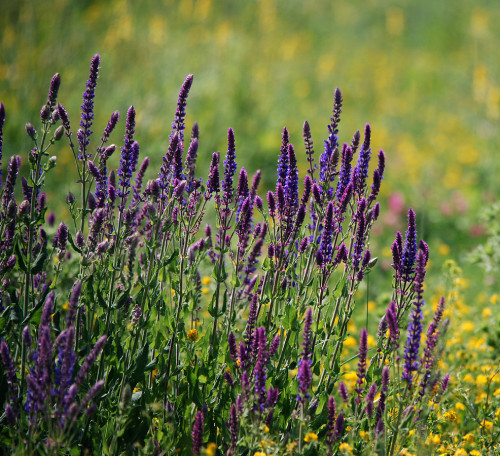
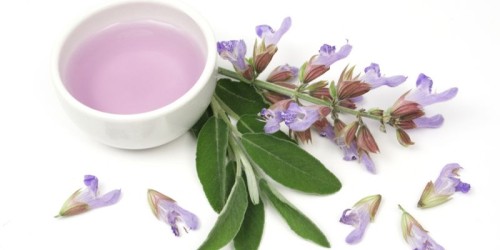

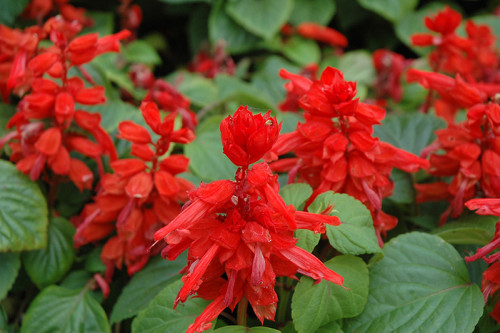
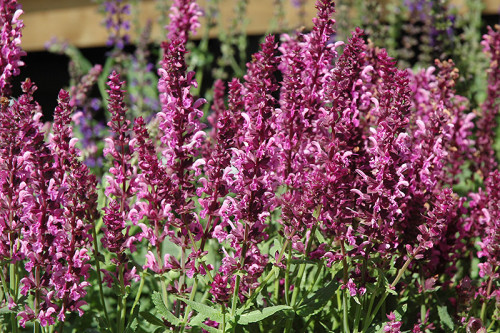
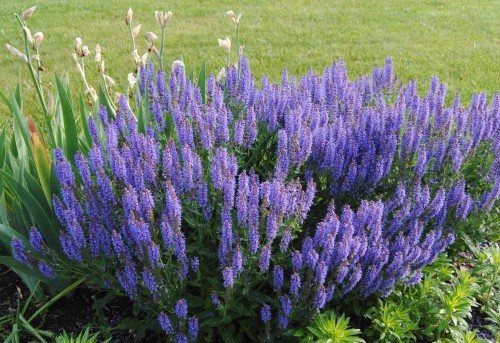
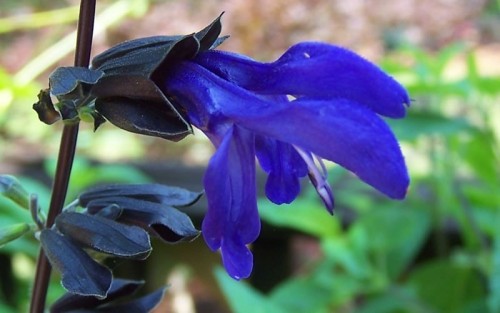












 Start a discussion ...
Start a discussion ...